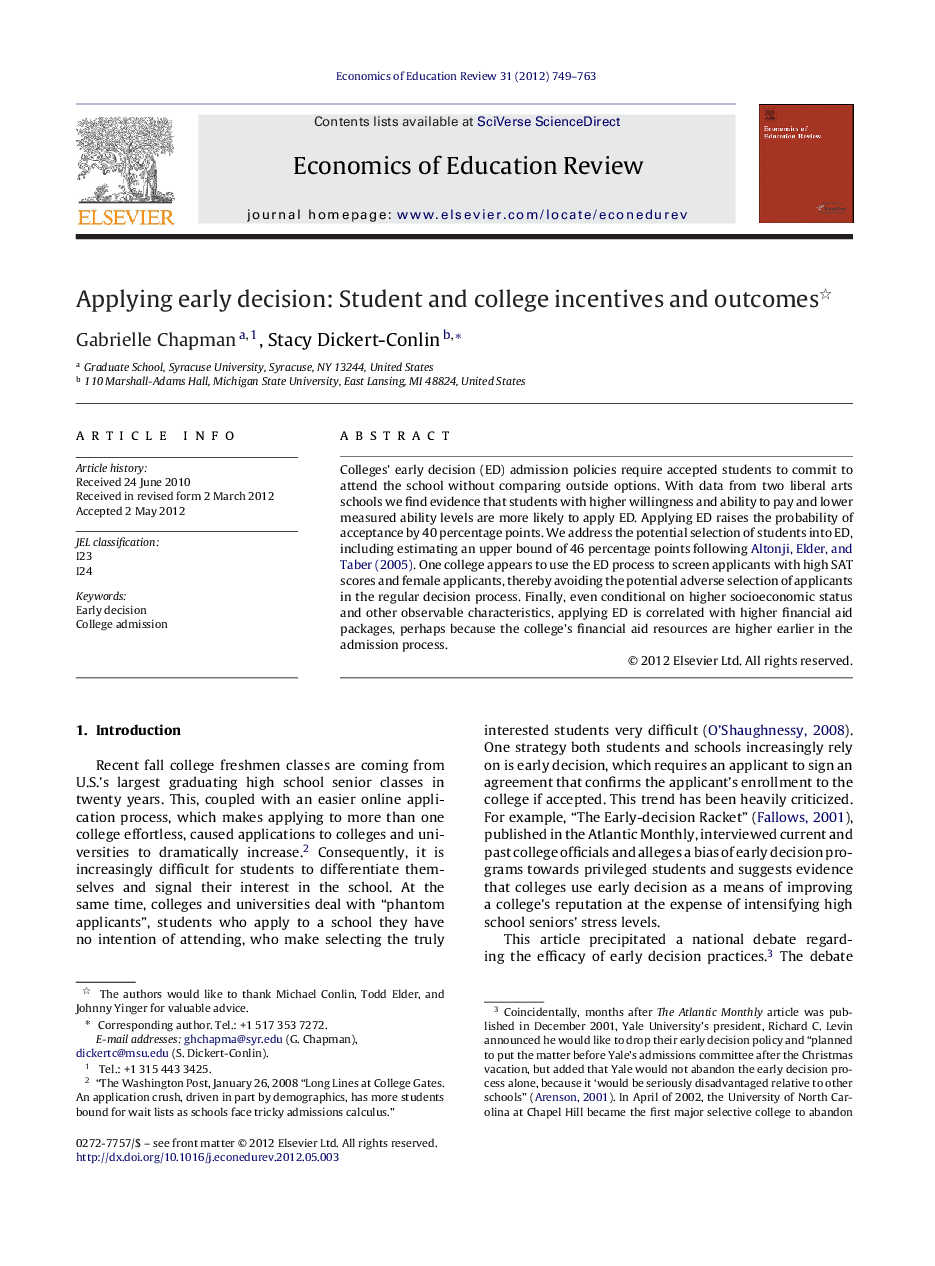| Article ID | Journal | Published Year | Pages | File Type |
|---|---|---|---|---|
| 354442 | Economics of Education Review | 2012 | 15 Pages |
Colleges’ early decision (ED) admission policies require accepted students to commit to attend the school without comparing outside options. With data from two liberal arts schools we find evidence that students with higher willingness and ability to pay and lower measured ability levels are more likely to apply ED. Applying ED raises the probability of acceptance by 40 percentage points. We address the potential selection of students into ED, including estimating an upper bound of 46 percentage points following Altonji, Elder, and Taber (2005). One college appears to use the ED process to screen applicants with high SAT scores and female applicants, thereby avoiding the potential adverse selection of applicants in the regular decision process. Finally, even conditional on higher socioeconomic status and other observable characteristics, applying ED is correlated with higher financial aid packages, perhaps because the college's financial aid resources are higher earlier in the admission process.
► College acceptance increases by 40 percentage points with early decision application. ► The difference may be even larger under when accounting for selection. ► One college appears to use early decision to screen applicants with high SATs. ► Conditionally, early decision is correlated with higher financial aid packages.
